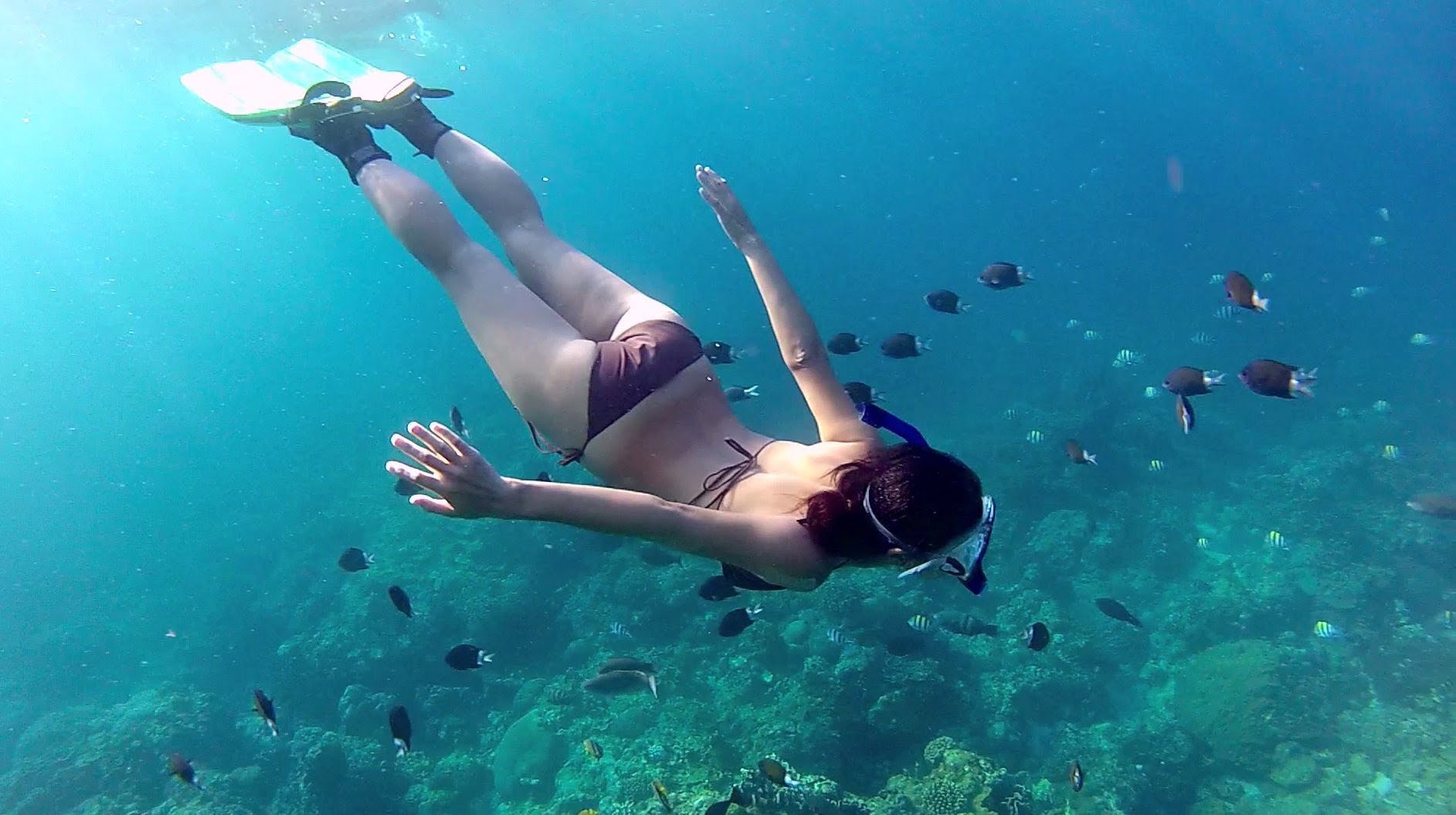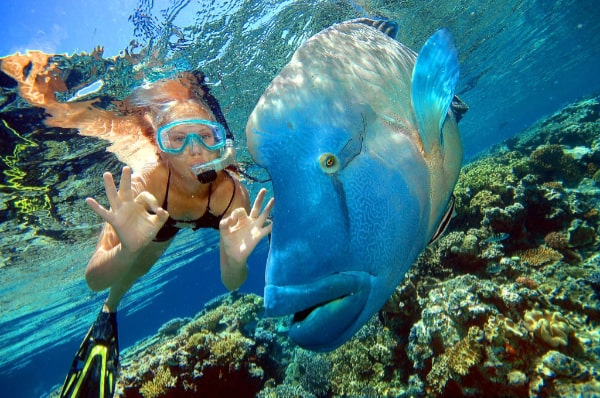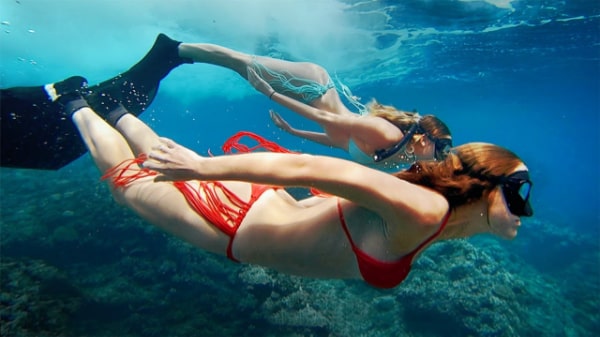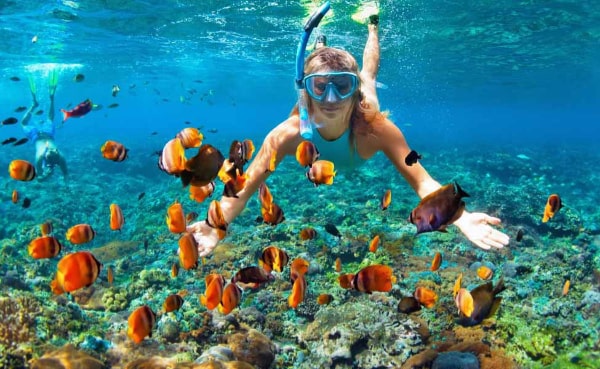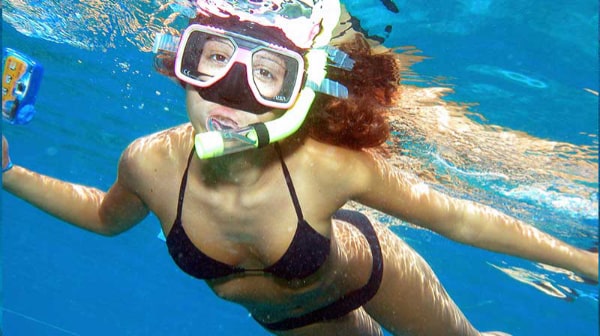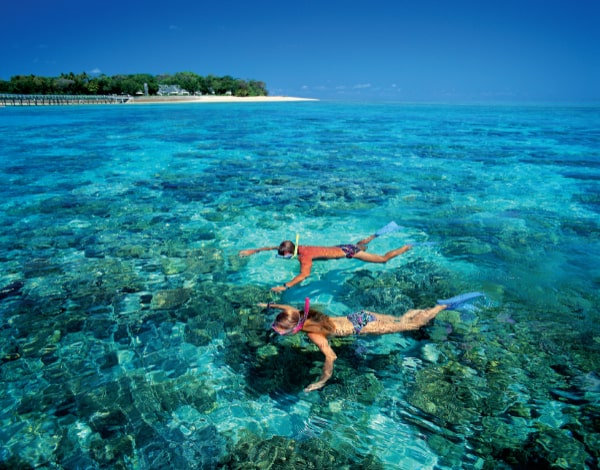
Snorkelling in Andaman
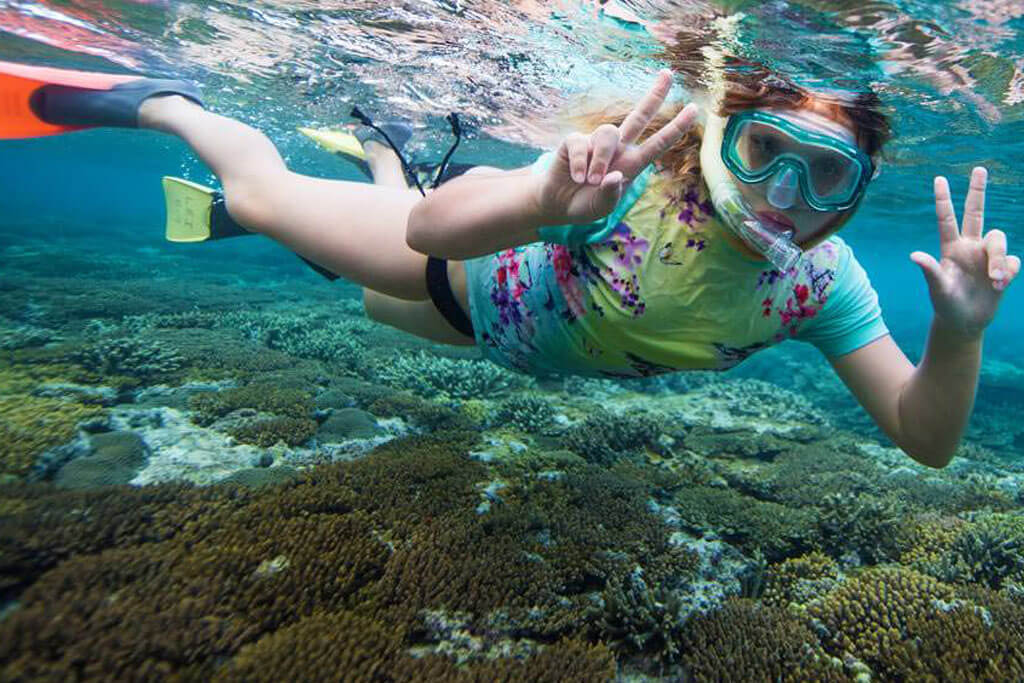
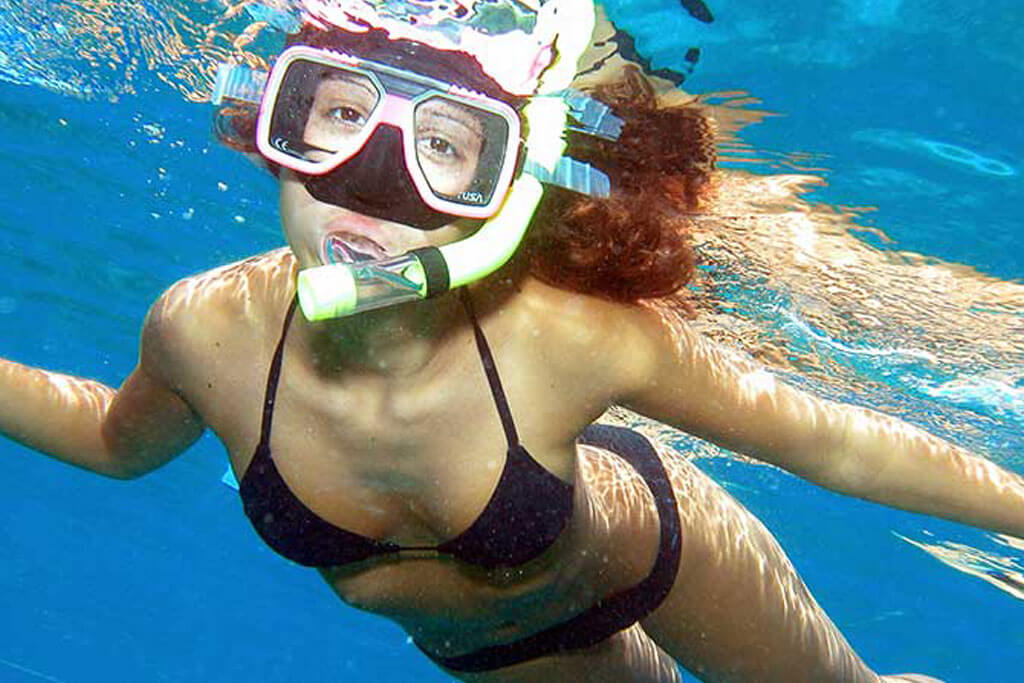
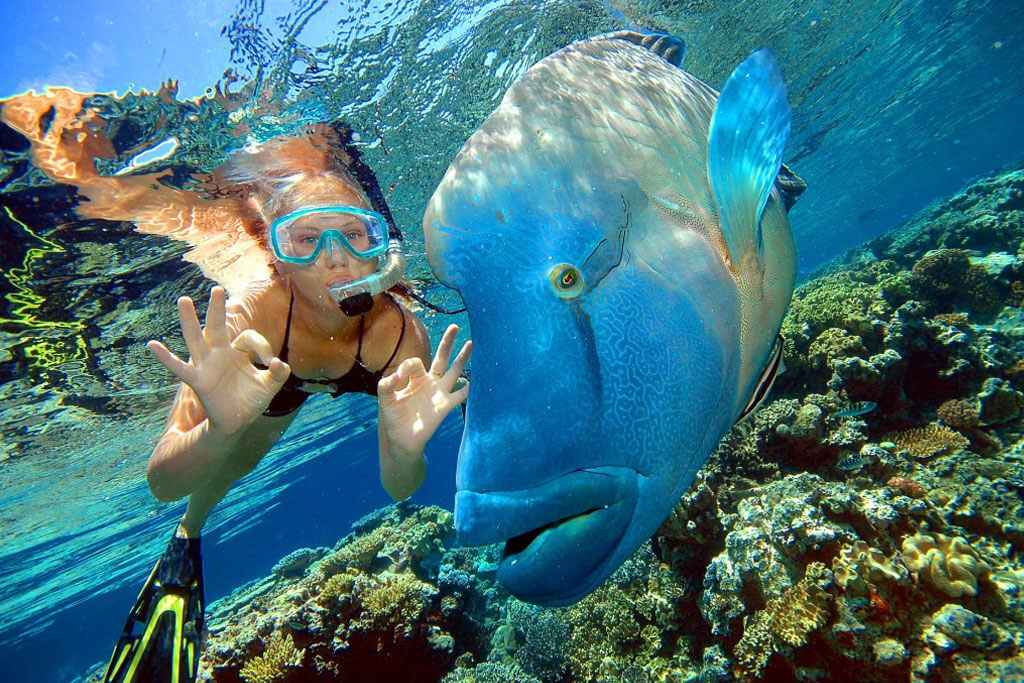
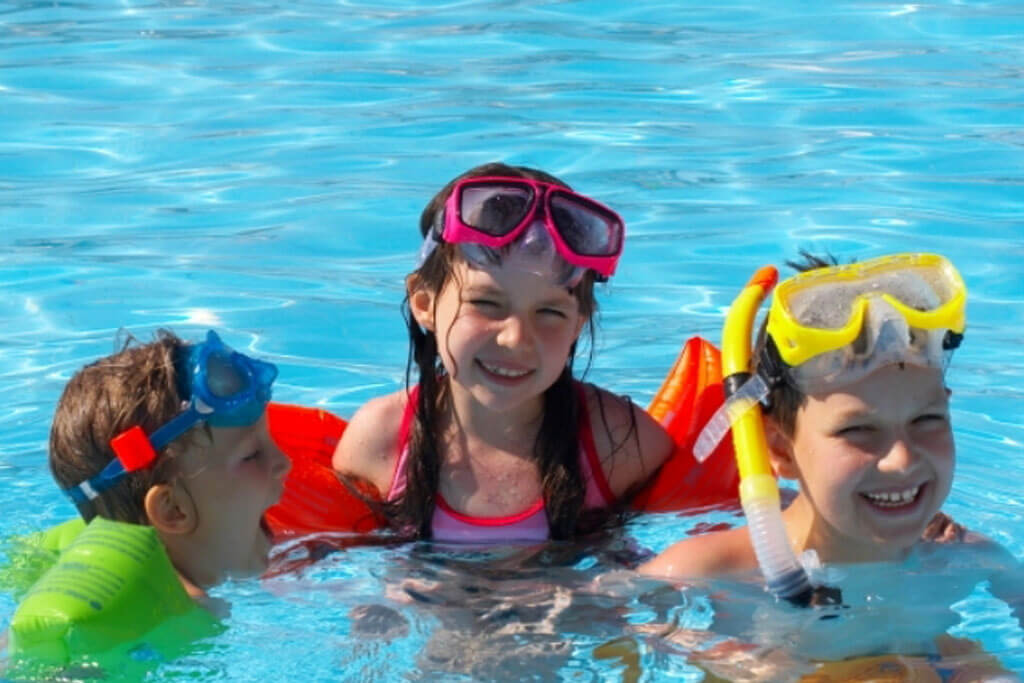
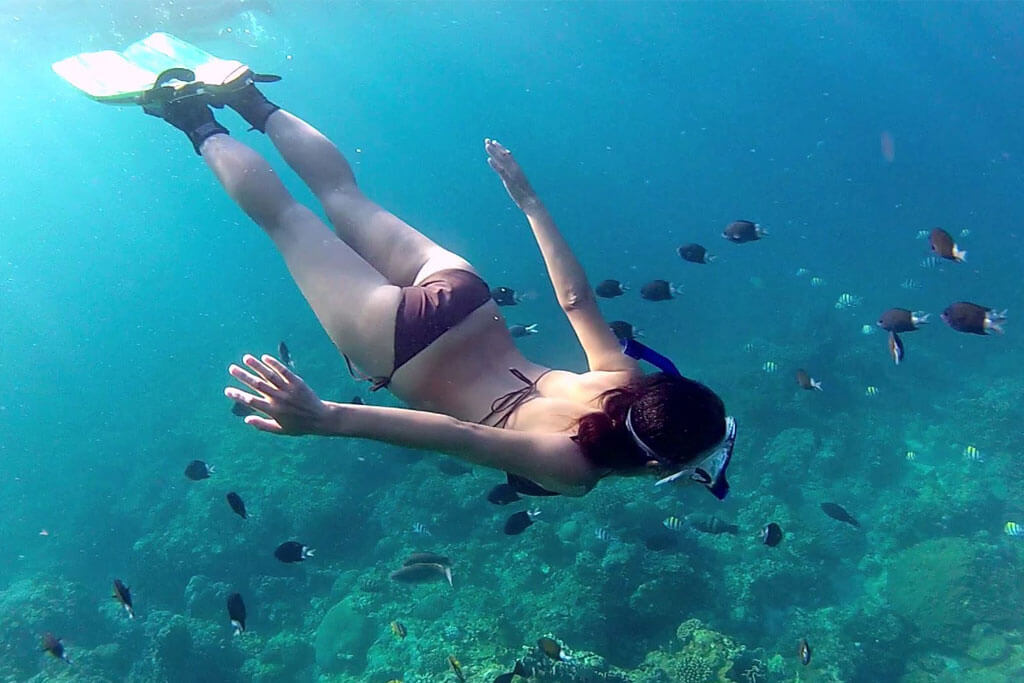
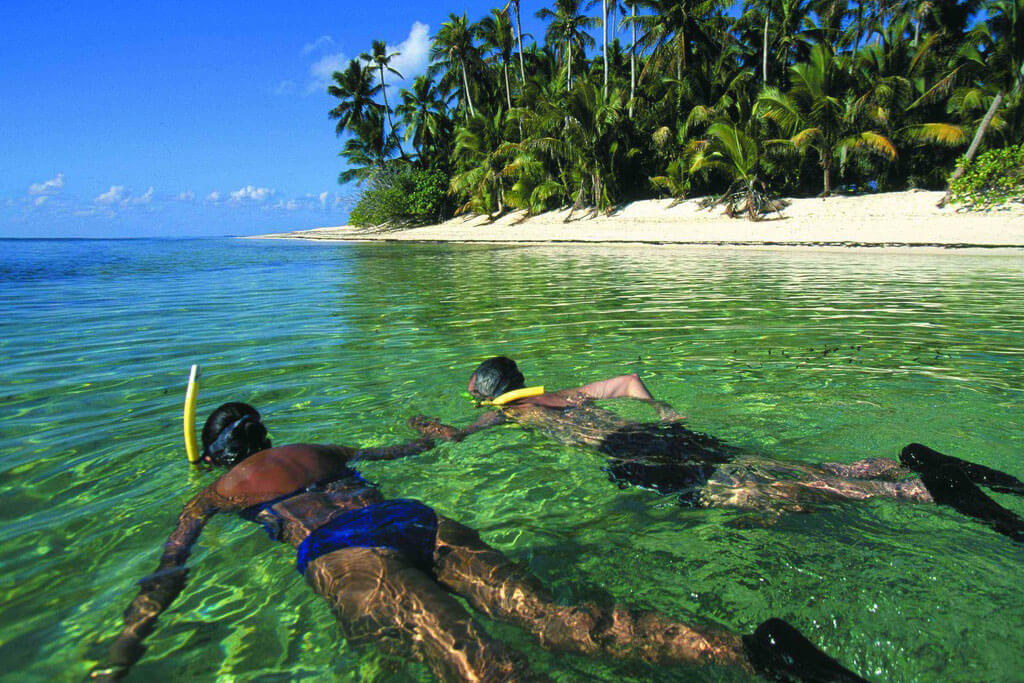
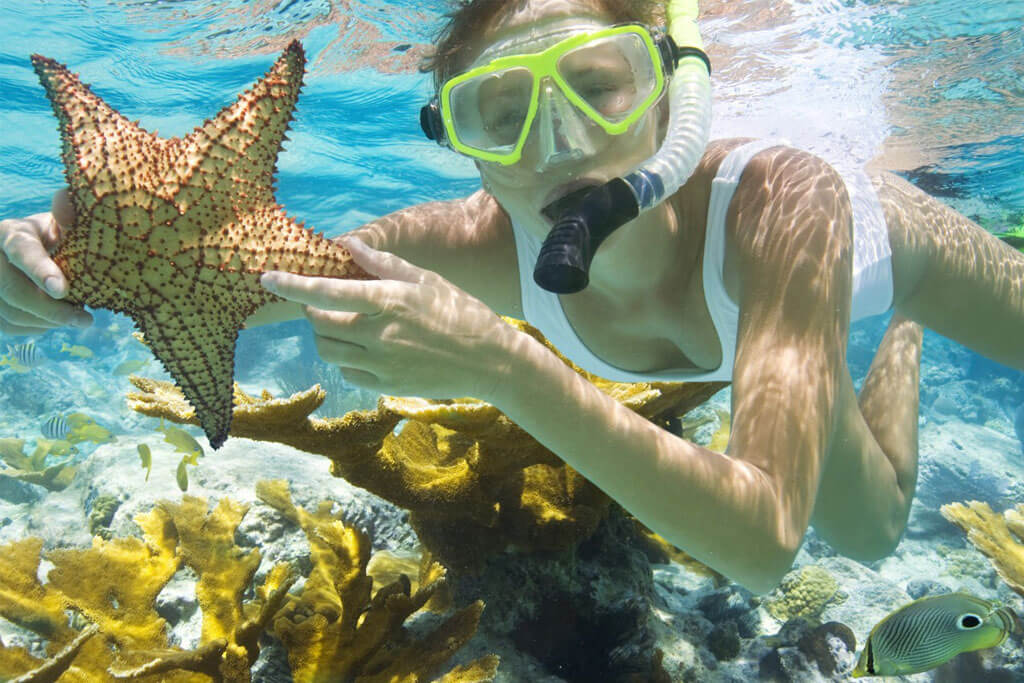
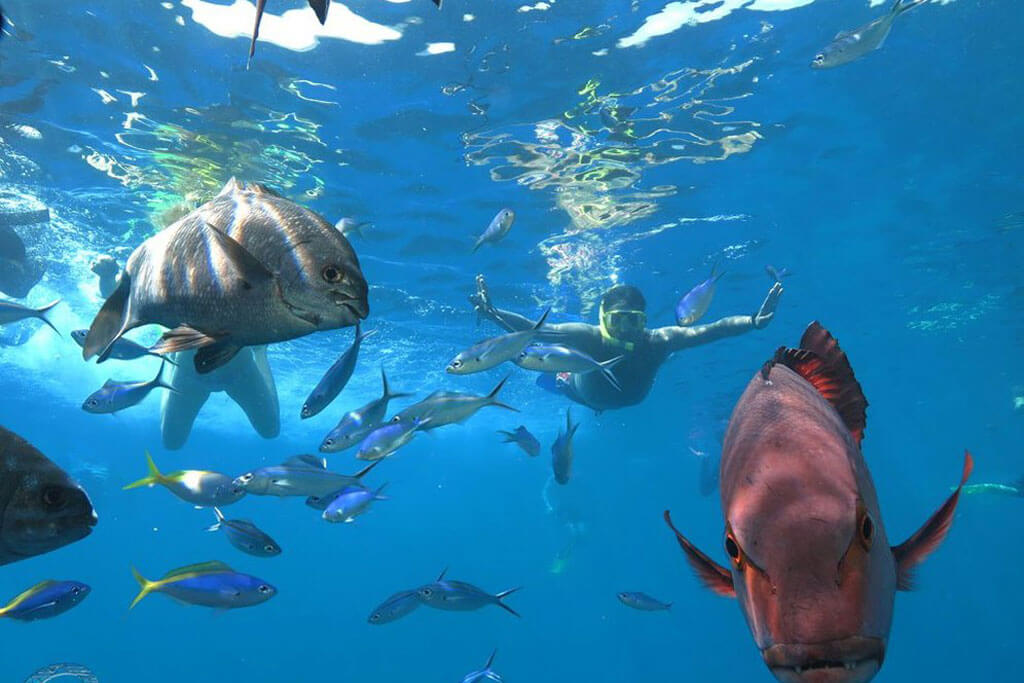
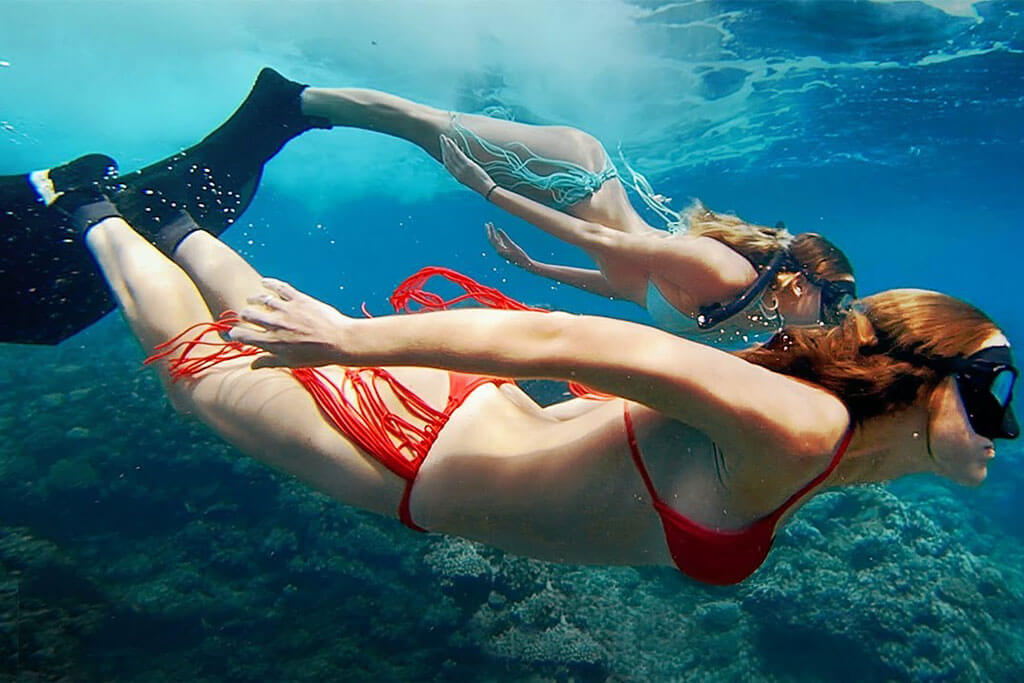
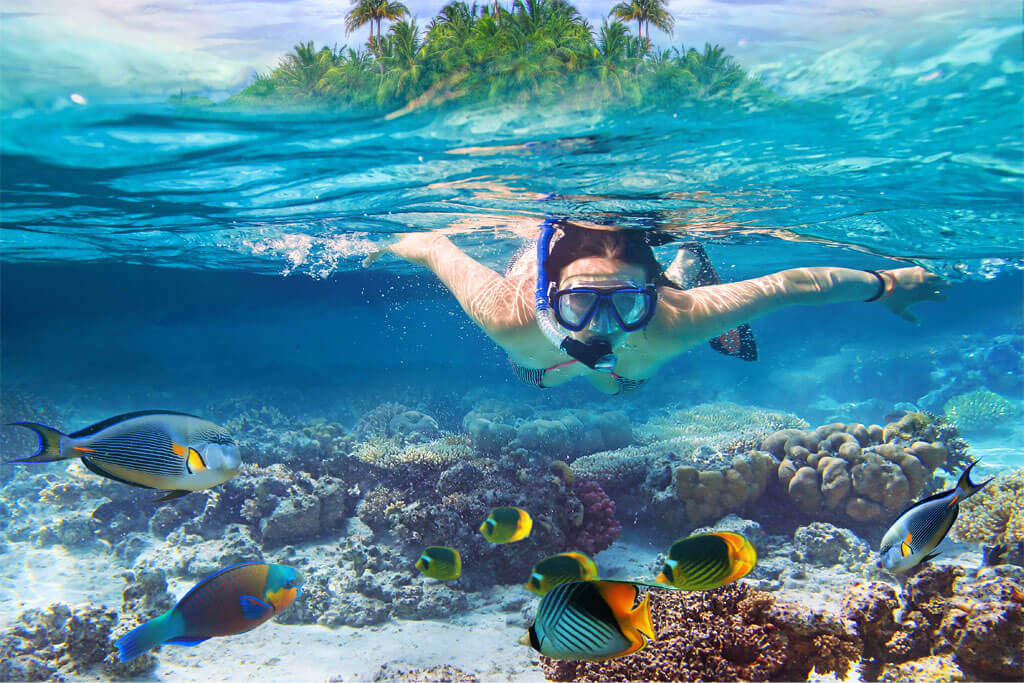
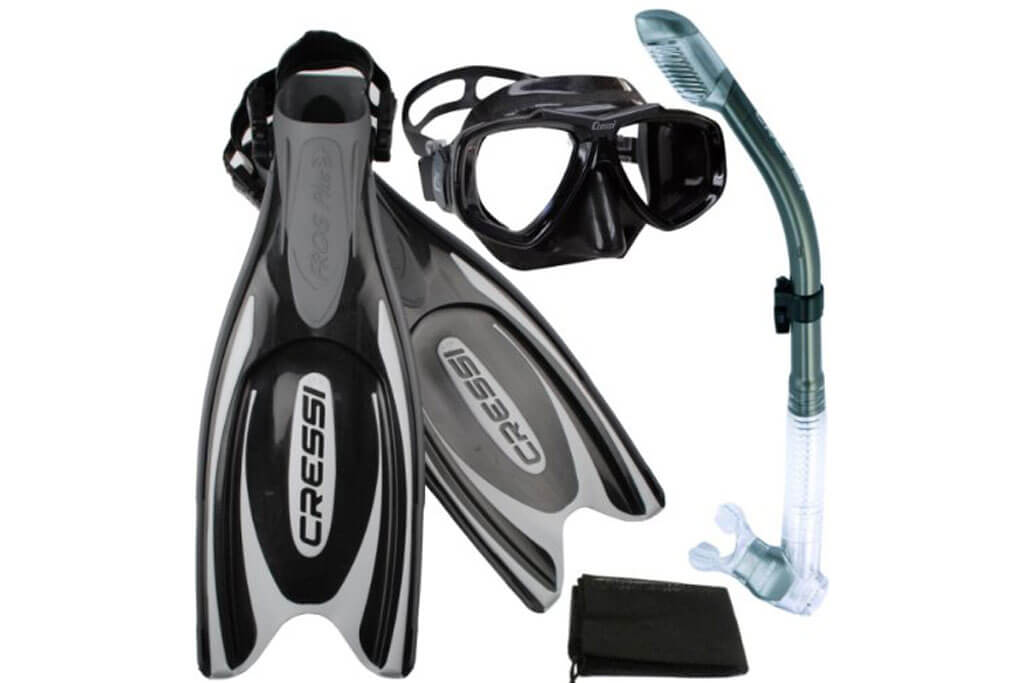
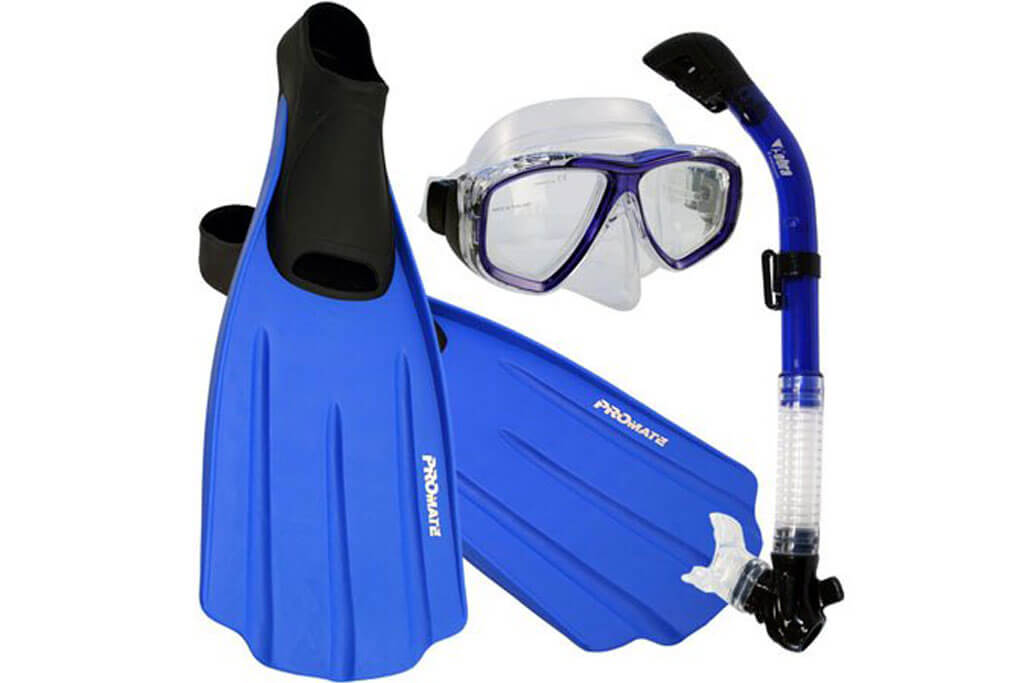
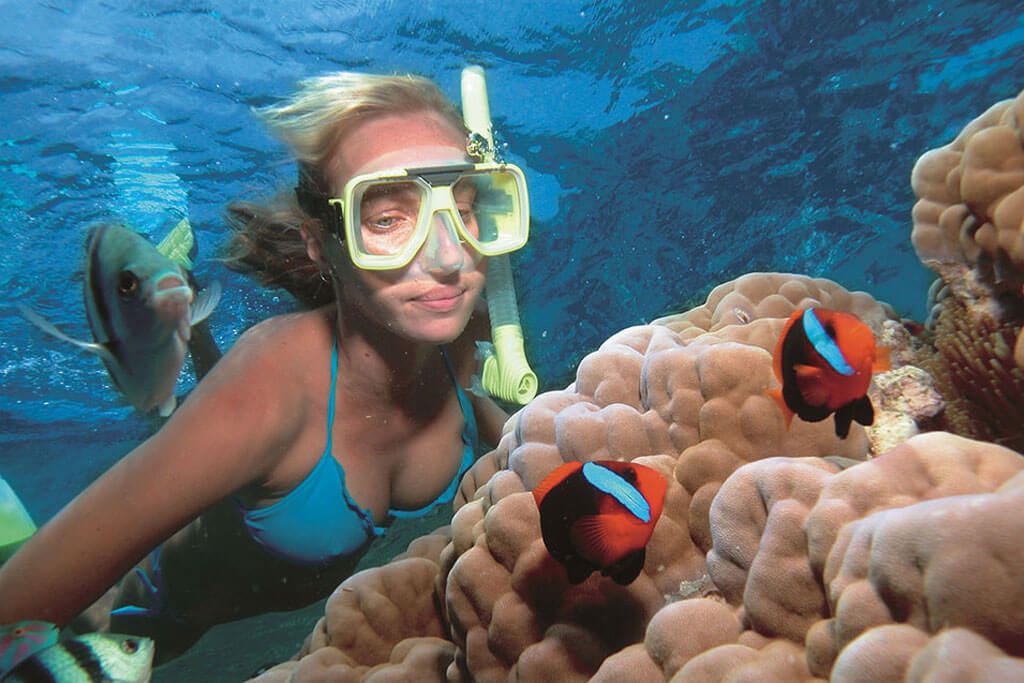
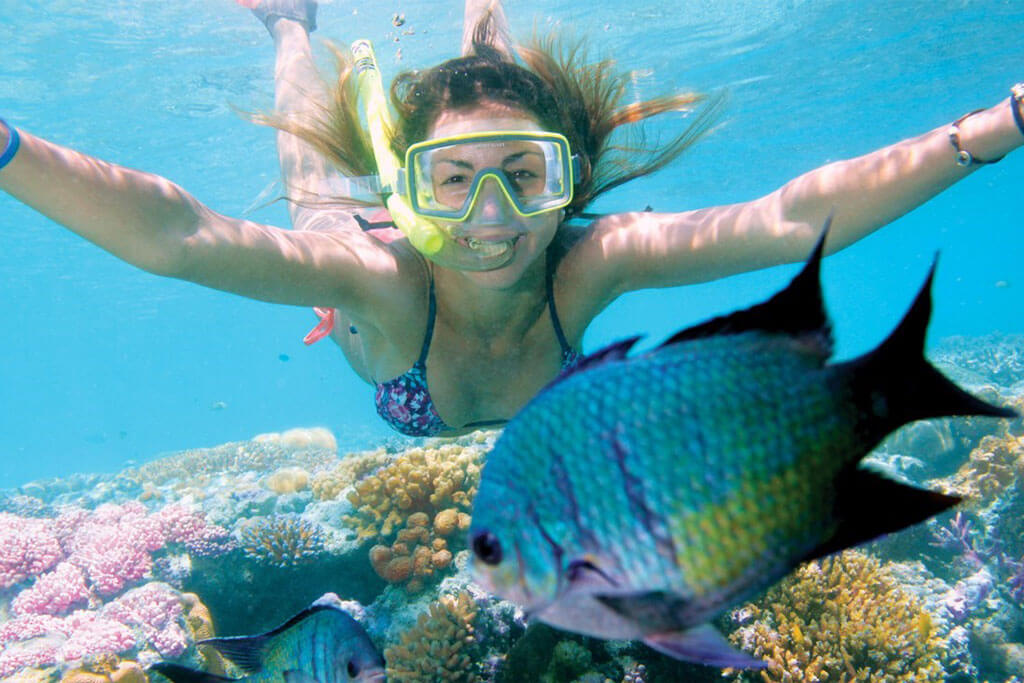
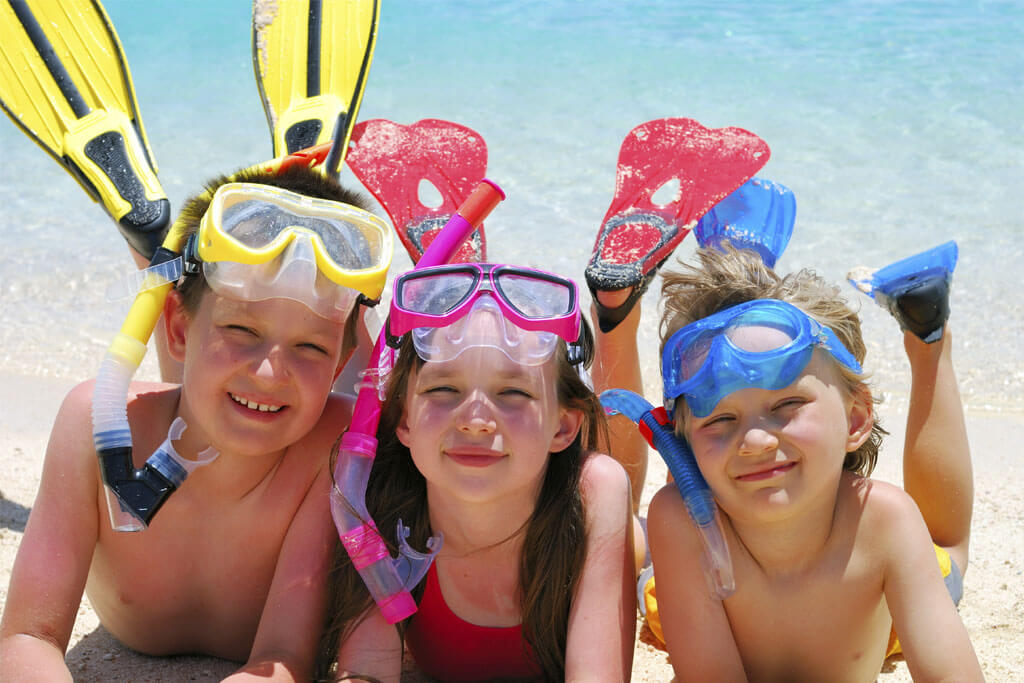
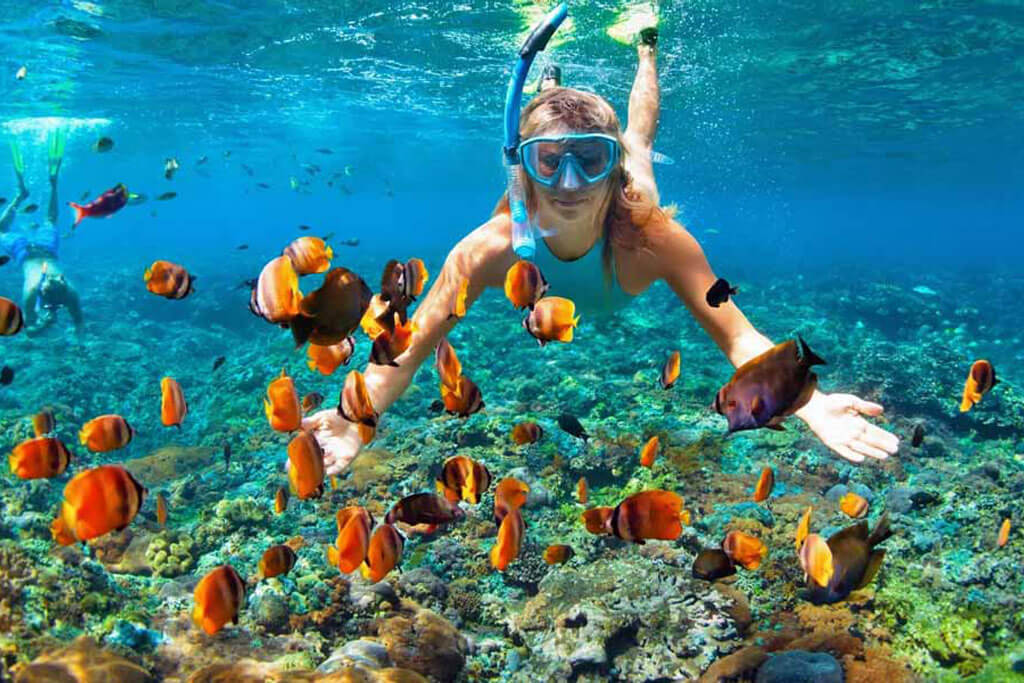
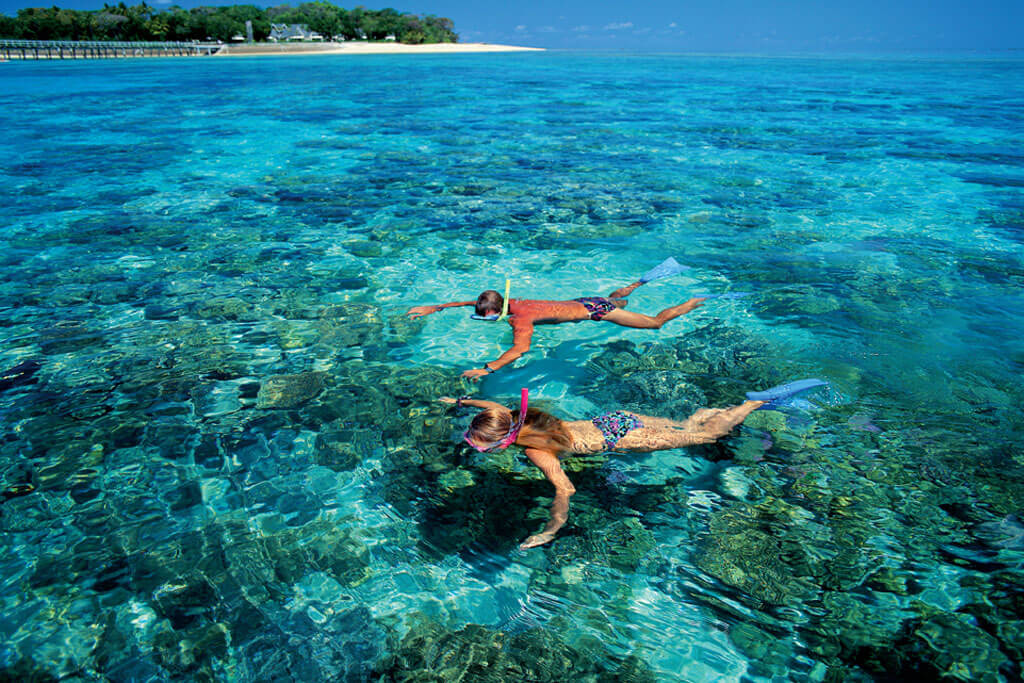
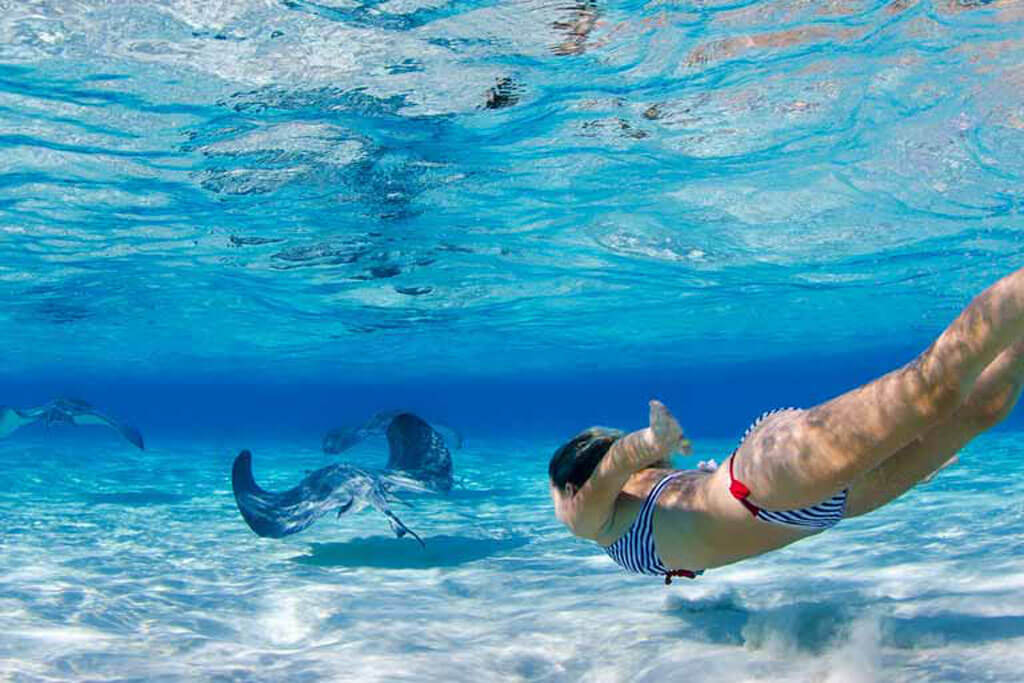
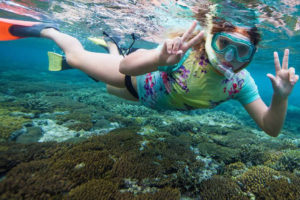
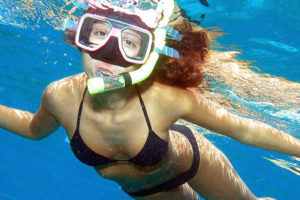
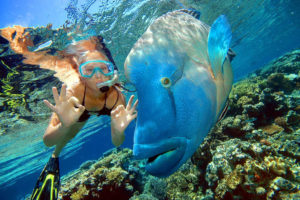
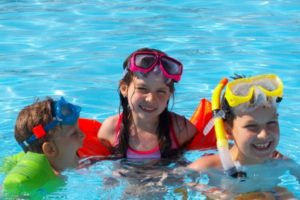
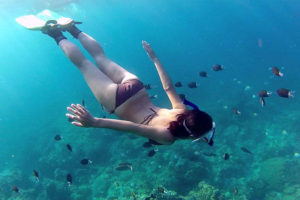
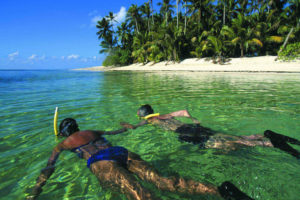
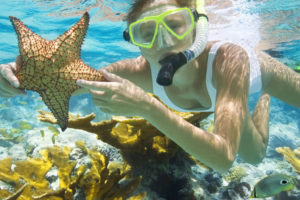
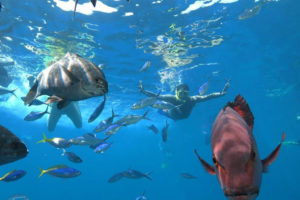
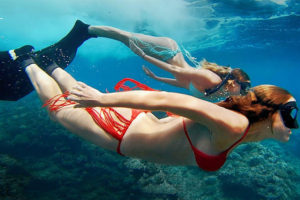
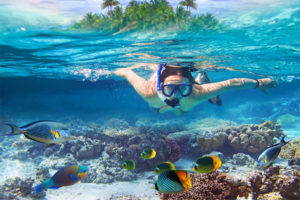
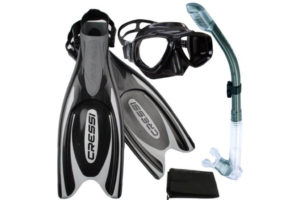
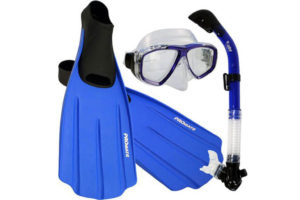
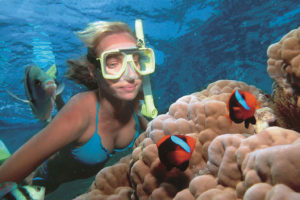
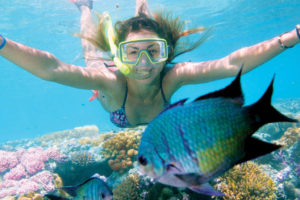
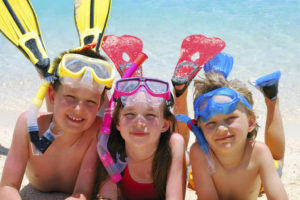
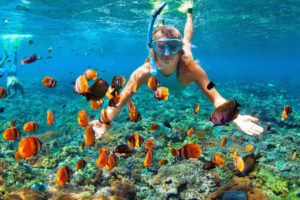
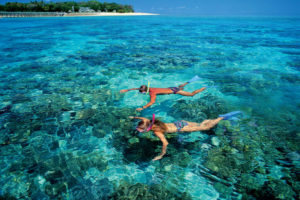
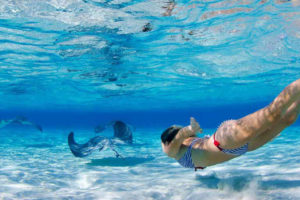
HIGHLIGHTS
Best place for Snorkeling in Andaman: North Bay/Elephanta Beach/Bharatpur Beach/Jolly Buoy Island
Best Time of Snorkeling in Andaman: Time: Morning
Duration: Depends on package type
cost of snorkeling in Andaman – 1,000/-pp
Snorkeling in Andaman age limit: Above 10 Yrs
Inclusion: Diving Photos and Videos (Depends on Package)
Booking: Direct on the beach or In advance
DESCRIPTION
Snorkeling is a delightful water activity that allows individuals to explore the underwater world while floating near the surface of the water. It offers a unique opportunity to observe marine life, coral reefs, and other underwater wonders without the need for extensive training or specialized equipment. Here’s a description of snorkeling:
When you go snorkeling, you wear a snorkel mask that covers your eyes and nose, allowing you to see clearly underwater. The mask creates a watertight seal, ensuring that water doesn’t enter your eyes or nose while you explore.
Attached to the mask is a snorkel tube that extends above the water’s surface, enabling you to breathe effortlessly. The snorkel tube has a mouthpiece that fits comfortably in your mouth, allowing you to inhale and exhale without lifting your head out of the water.
As you float on the surface of the water, you can dip your face into the water, submerging the snorkel tube and allowing yourself to take in the beauty beneath. The underwater world comes alive as you peer down and witness vibrant coral reefs, colorful fish darting around, and other fascinating marine creatures in their natural habitat.
You can kick your legs gently or use fins to propel yourself through the water, exploring different areas and following the marine life that catches your eye. Snorkeling provides a peaceful and serene experience, allowing you to immerse yourself in the beauty and tranquility of the underwater environment.
One of the benefits of snorkeling is its accessibility to people of various ages and skill levels. It’s an activity that can be enjoyed by individuals of all abilities, including children and adults, without requiring extensive training or certification.
Snorkeling is an excellent way to connect with nature, discover new marine ecosystems, and create lasting memories. Whether you’re on a tropical beach vacation or exploring a local reef, snorkeling offers a remarkable glimpse into the underwater world, providing a sense of adventure and awe-inspiring beauty just beneath the water’s surface.
BEST PLACE FOR SNORKELING IN ANDAMAN
The Andaman Islands, located in the Bay of Bengal, are renowned for their stunning marine biodiversity and pristine waters, making them an excellent destination for snorkeling. Here are some of the best places for snorkeling in Andaman:
Snorkeling at Havelock Island: Snorkeling at Elephanta Beach in the Andaman Islands offers a captivating underwater experience with vibrant coral reefs and diverse marine life. The crystal-clear waters and abundant marine biodiversity make it an ideal spot for snorkeling enthusiasts. With proper safety measures and guidance from trained instructors, snorkeling at Elephanta Beach can be a safe and memorable adventure, allowing you to explore the underwater world and witness the beauty of the Andaman Sea.
Snorkeling at Neil Island: Snorkeling at Bharatpur Beach in the Andaman Islands provides an opportunity to discover the enchanting underwater world. With its calm and shallow waters, Bharatpur Beach offers excellent visibility and is known for its stunning coral formations and colorful marine life. Snorkelers can witness an array of tropical fish, vibrant corals, and other fascinating creatures. Whether you are a beginner or an experienced snorkeler, exploring the underwater beauty of Bharatpur Beach is a thrilling experience that can be enjoyed with proper snorkeling gear and guidance from local experts.
Snorkeling at North Bay Island: Located near Port Blair, North Bay Island is easily accessible and offers fantastic snorkeling opportunities. The island is known for its rich coral reefs, clear waters, and a variety of fish species. Snorkelers can witness colorful corals and encounter schools of fish while exploring the underwater world.
Jolly Buoy Island/Mahatma Gandhi Marine National Park: Part of the Mahatma Gandhi Marine National Park, Jolly Buoy Island is a restricted area and can be visited on a rotation basis with Red Skin Island. Both islands are known for their vibrant coral reefs, crystal-clear waters, and diverse marine life, including colorful fish, turtles, and more.
Cinque Island: Cinque Island is a remote and less crowded destination that offers exceptional snorkeling experiences. It is known for its pristine coral reefs, exotic fish species, and the opportunity to spot larger marine creatures like sea turtles and rays.
It’s important to note that the availability and accessibility of snorkeling sites may vary based on weather conditions and permissions from the authorities. It is recommended to check with local tour operators or dive centers for the most up-to-date information and to ensure a safe and enjoyable snorkeling experience in Andaman.
BEST TIME FOR SNORKELING IN ANDAMAN
The best time for snorkeling in Andaman is during the dry season from November to April, when the weather is pleasant, the sea is calm, and visibility underwater is good. Avoid the monsoon season from June to September due to heavy rainfall and rough sea conditions.
COST OF SNORKELING IN ANDAMAN ISLANDS
- Port Blair – At North Bay Beach INR 1,000/-pp
- Port Blair – At Jolly Buoy Island INR 1,000/-pp
- Havelock Island – At Elephanta Beach INR -1,000/-pp
- Neil Island – At Bharatpur Beach for INR 1,000/-
It’s important to note that the prices mentioned above are approximate and can vary depending on the season, location, and operator. It is advisable to research and compare prices from different operators, ensuring they offer reputable services and adhere to safety standards.
SNORKELING PACKAGE INCLUDES:
A typical snorkeling package includes:
- Snorkeling gear (mask, snorkel, fins)
- Guide or instructor
- Safety equipment
- Professional photos & Video
HOW TO BOOK SNORKELLING IN ANDAMAN
You can easily book snorkeling in Andaman through our travel agency. Contact us via our website, email, or phone, and inform us about your preferred dates and the number of participants. Our experienced agents will assist you in selecting a reputable snorkeling operator that aligns with your preferences and requirements. We will handle the booking process, ensuring availability for your desired dates and securing your snorkeling experience. Once the booking is confirmed, you will receive all the necessary details for your snorkeling trip. With our travel agency’s expertise, you can enjoy a seamless and memorable snorkeling adventure in the beautiful waters of Andaman.
WHAT IS THE BASIC EQUIPMENT FOR SNORKELING?
Here’s the information specifically about the equipment needed for snorkeling:
Snorkel Mask: A snorkel mask is a key piece of equipment that allows you to see clearly underwater while keeping your eyes and nose protected. The mask should fit comfortably on your face and create a watertight seal. It typically has tempered glass lenses and a soft silicone skirt that ensures a snug fit.
Snorkel Tube: The snorkel tube is a breathing apparatus that allows you to breathe while your face is submerged in the water. It is attached to the snorkel mask and has a mouthpiece for you to bite down on. The snorkel tube is designed to keep the airway above the water’s surface, ensuring a continuous flow of fresh air.
Fins: While not essential, fins can enhance your snorkeling experience by providing propulsion and making it easier to swim through the water. Snorkeling fins come in various styles and sizes. They are typically worn on your feet and are designed to provide power and efficiency while reducing leg fatigue.
Optional Accessories: There are a few optional accessories that can enhance your comfort and convenience while snorkeling. These include neoprene snorkel socks or booties to protect your feet, a snorkel vest or flotation device for added buoyancy and safety, and anti-fog solution or spray to prevent your mask from fogging up.
GENERAL TIPS FOR SNORKELING
Here are some general tips to keep in mind for a safe and enjoyable snorkeling experience:
- Choose the Right Location: Select a snorkeling spot suitable for your skill level and experience. Look for calm waters, good visibility, and diverse marine life. Be aware of any specific guidelines or restrictions in the area.
- Check the Weather Conditions: Before heading out, check the weather forecast and sea conditions. Avoid snorkeling in rough seas or during inclement weather, as it can be dangerous and reduce visibility.
- Buddy System: Whenever possible, snorkel with a buddy or in a group. It enhances safety, allows for assistance if needed, and makes the experience more enjoyable. Keep an eye on each other and communicate using pre-established hand signals.
- Practice Proper Breathing: Breathe slowly and deeply through the snorkel tube. Take your time to adjust to breathing underwater and avoid rapid, shallow breathing. If water enters the snorkel, use a quick exhale to clear it.
- Clearing the Snorkel: Learn how to clear water from the snorkel if it becomes submerged. To do this, gently exhale forcefully through the snorkel tube, clearing any water out of the top valve.
- Equalize Your Ears: As you descend, especially if you dive slightly underwater, equalize the pressure in your ears by gently pinching your nose and blowing gently. This helps prevent discomfort or injury.
- Respect Marine Life: Maintain a respectful distance from marine life and avoid touching or disturbing them. Do not stand or step on coral reefs, as they are fragile and easily damaged.
- Protect Yourself from the Sun: Apply a waterproof sunscreen before snorkeling to protect your skin from sunburn. Wear a rash guard or wetsuit to provide additional sun protection and reduce the risk of jellyfish stings or minor scrapes.
- Stay Hydrated: Snorkeling can be physically exerting, so remember to stay hydrated. Bring water or hydrating fluids and drink regularly, especially in warm climates.
- Practice Environmental Conservation: Be mindful of the marine environment and avoid leaving any trash or debris behind. Leave only footprints and take memories and photographs with you.
By following these tips, you can have a safe and memorable snorkeling experience while respecting the underwater ecosystem. Remember to always prioritize your safety and that of the marine environment.
WHO CAN DO SNORKELING?
- Snorkeling can be enjoyed by people of various ages, including children as young as 5 or 6 years old (with appropriate supervision).
- Basic swimming abilities are important for snorkeling, including being comfortable in the water and using basic swimming strokes.
- Most individuals in good health can participate in snorkeling, but those with specific medical conditions should consult with their healthcare provider.
- Snorkeling is a beginner-friendly activity that does not require specialized training or certifications.
- Being comfortable in the water and having a basic level of fitness are important for snorkeling.
- Prioritizing safety, following guidelines, and snorkeling in suitable areas are crucial.
- Snorkeling with a buddy or as part of a guided tour can enhance safety and enjoyment.
IS IT SAFE?
Snorkeling can be a safe activity when proper safety precautions are followed, such as snorkeling in clear waters with good visibility, using well-fitting and maintained equipment, swimming with a buddy or as part of a guided tour, and being aware of personal limitations and potential hazards.
DIFFERENCE BETWEEN SNORKELING AND SCUBA DIVING?
Snorkeling and scuba diving are both popular activities that allow individuals to explore the underwater world, but there are several key differences between the two:
- Equipment: In snorkeling, participants use a mask, snorkel (breathing tube), and fins to swim near the water’s surface. Scuba diving, on the other hand, requires more extensive equipment, including a scuba tank, regulator, buoyancy control device (BCD), dive computer, and more.
- Depth and Duration: Snorkeling is typically done near the surface of the water, allowing participants to breathe air directly from the atmosphere through the snorkel. Scuba diving, however, allows divers to descend to greater depths, sometimes up to several tens of meters, using compressed air from the scuba tank. Scuba divers can stay underwater for longer periods, limited by their air supply and dive tables or computer.
- Training and Certification: Snorkeling does not require formal training or certification. It is a relatively simple activity that can be enjoyed by individuals of various ages and skill levels. Scuba diving, on the other hand, requires proper training and certification from recognized diving organizations. This training includes theoretical knowledge, practical skills, and safety protocols to ensure safe diving practices.
- Skills and Techniques: Snorkeling requires basic swimming skills and the ability to breathe through the snorkel while keeping the face submerged. Scuba diving involves learning specific skills, such as proper buoyancy control, equalization techniques, underwater communication, and managing the additional equipment.
- Depth and Marine Life Exploration: Snorkeling allows participants to observe the underwater world near the surface, including coral reefs, fish, and other marine life. Scuba diving, with its ability to reach greater depths, enables divers to explore more diverse and deeper marine ecosystems, encounter larger marine creatures, and access unique dive sites and underwater features.
- Risks and Safety: Snorkeling carries fewer inherent risks compared to scuba diving, as participants are closer to the surface and can easily return to the air. Scuba diving involves additional risks due to the increased depth, decompression sickness, nitrogen narcosis, and other factors. Proper training, adherence to safety protocols, and dive planning are crucial in minimizing the risks associated with scuba diving.
It’s important to note that both snorkeling and scuba diving offer unique experiences and opportunities to enjoy the underwater world. The choice between the two depends on personal preferences, comfort level in the water, desired depth of exploration, and willingness to undergo formal training and certification.
Frequently
Asked Questions
Snorkeling is a water activity where individuals swim near the water’s surface while wearing a mask, snorkel (breathing tube), and fins to observe the underwater world.
Basic swimming abilities are important for snorkeling. While you don’t need to be an expert swimmer, being comfortable in the water and having basic swimming skills is recommended.
Yes, snorkeling can be enjoyed by children. However, they should be comfortable in the water, have basic swimming skills, and be supervised by adults.
No prior experience or formal training is required for snorkeling. It is a beginner-friendly activity that can be enjoyed by individuals of various skill levels.
The basic equipment for snorkeling includes a snorkel mask, snorkel (breathing tube), and fins. Optional equipment may include a snorkel vest for added buoyancy and a wetsuit or rash guard for thermal protection.
Snorkeling is typically done near the water’s surface, allowing you to observe the underwater world from above. The depth depends on personal comfort and the visibility of the area.
It is recommended to wear prescription snorkel masks if you require vision correction. These masks have built-in lenses that can be customized to your prescription. Contact lenses can also be worn under the mask, but ensure they are securely in place.
Yes, safety is important while snorkeling. Always snorkel with a buddy, be aware of your surroundings, avoid touching or damaging coral reefs, and follow local safety guidelines. It’s also important to know your limits and never push yourself beyond what you are comfortable with.
It depends on the specific health condition. Certain medical conditions, such as respiratory problems or ear issues, may require consultation with a healthcare professional before engaging in snorkeling. Always prioritize your health and seek professional advice if needed.
Snorkeling spots vary around the world. Some popular destinations for snorkeling include tropical locations with clear waters and vibrant marine life, such as the Great Barrier Reef, Maldives, Hawaii, and the Andaman Islands.
Remember, these are general FAQs, and specific locations or circumstances may have additional considerations. It’s always recommended to seek information from local authorities, tour operators, or diving centers for specific guidelines and safety information related to your snorkeling destination.


